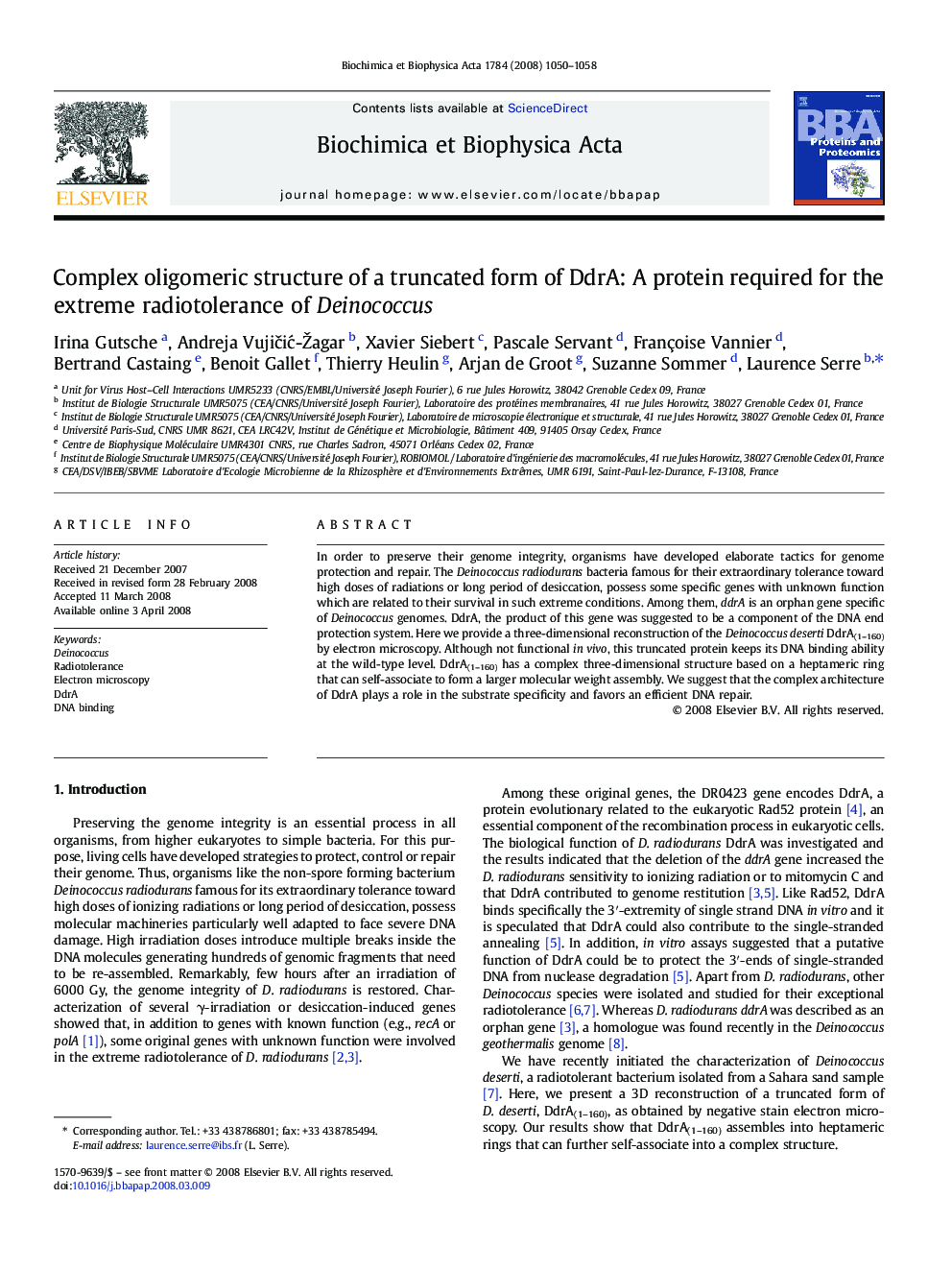| Article ID | Journal | Published Year | Pages | File Type |
|---|---|---|---|---|
| 1178239 | Biochimica et Biophysica Acta (BBA) - Proteins and Proteomics | 2008 | 9 Pages |
In order to preserve their genome integrity, organisms have developed elaborate tactics for genome protection and repair. The Deinococcus radiodurans bacteria famous for their extraordinary tolerance toward high doses of radiations or long period of desiccation, possess some specific genes with unknown function which are related to their survival in such extreme conditions. Among them, ddrA is an orphan gene specific of Deinococcus genomes. DdrA, the product of this gene was suggested to be a component of the DNA end protection system. Here we provide a three-dimensional reconstruction of the Deinococcus deserti DdrA(1–160) by electron microscopy. Although not functional in vivo, this truncated protein keeps its DNA binding ability at the wild-type level. DdrA(1–160) has a complex three-dimensional structure based on a heptameric ring that can self-associate to form a larger molecular weight assembly. We suggest that the complex architecture of DdrA plays a role in the substrate specificity and favors an efficient DNA repair.
